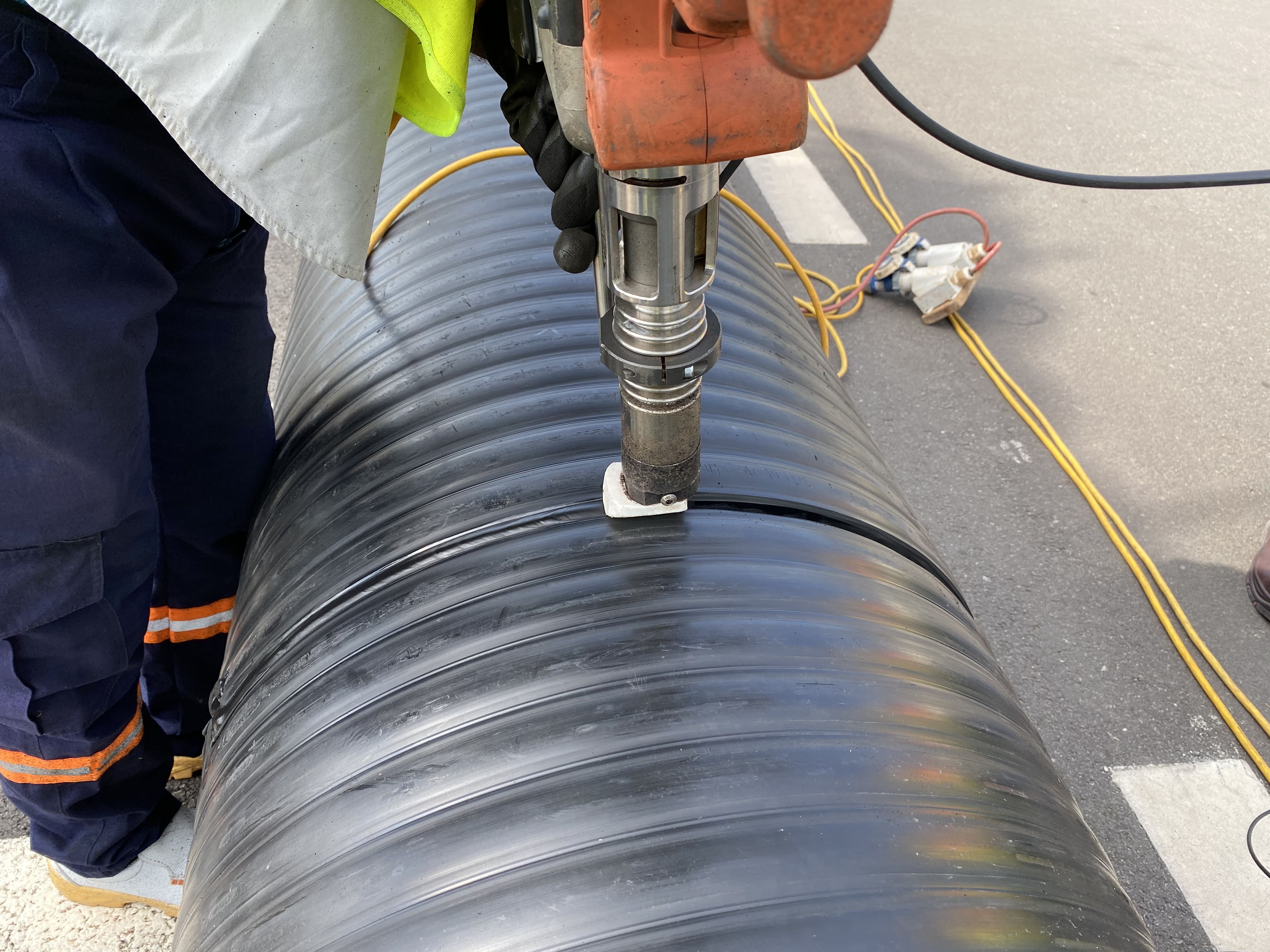It is important that the most efficient method of jointing is
used to ensure the pipeline remains watertight, durable and
effective for potentially excessive movement in poor ground
conditions; and depending on application, there are different
methods of jointing Weholite.
Heat Extrusion Jointing
This process, carried out by direct Weholite personnel, provides an economical and fast method of delivering a complete, long, continuous length of pipeline, which allows the joint to be as strong as the pipe itself. Extrusion welding is a semi-mechanical process for thick-walled pipes where a higher level of joint integrity is required.Extrusion welded joints are proven in tests to be the industry’s strongest and most reliable method for joining structured wall pipes. The German DVS standard tests them to a 50% greater force than other welding processes such as electrofusion.
The fusion welded jointing system is not susceptible to root intrusion or breakages and behaves homogeneously with excessive ground movement.
Extrusion welding has a proven track record globally for large diameter pipes up to 3500mm diameter, providing the safest and most versatile solution on the market whilst still improving the efficiency and adding value to the overall project
Flexseal Couplings
Flexseal Extra Wide Couplings are used principally for connecting Weholite internal diameters of DN350 to DN2200. Weholite Flexseal Couplings are 300mm wide, which allows for greater tolerance in the cutting of the ends of the pipe as well as providing for the movement of pipes due to settlement or thermal effects.Lateral connections
The Water Research Council approved, Universal Adaptor Saddle; manufactured by Flexseal, can be used with Weholite. When used in conjunction with a Flexseal coupling it is an easy to fit product for connecting 160mm laterals into Weholite post installation.*Please contact us for advice on the most suitable system to fulfill your requirements.











